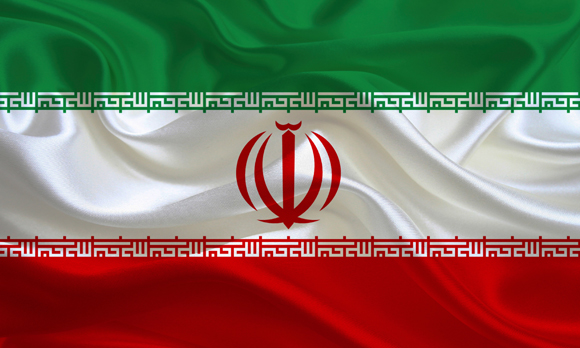Investment in Iran's Oil, Gas Upstream to Come Slowly

Iran’s claim that it can ramp up production to 500,000 barrels per day by second quarter 2016 is quite credible, an analyst told attendees at a conference on U.S.-Iran relations held at Rice University in Houston last week. But further growth in Iranian production volumes will be deterred by slow investment in Iran’s upstream oil and gas industry.
Iran, which has immense hydrocarbon reserves with low production costs, has never come close to its production potential. But a number of hurdles remain for Iranian production. Greg Priddy, director of global energy & natural resources at Eurasia Group, said that the revisal of Iran’s petroleum contract terms that are less favorable to the oil and gas industry makes it likely that interest in an Iranian bidding round will be disappointing. Initially, Iran took an industry-friendly stance, but moved back from that position.
“The cancellation of the London roadshow for Iranian petroleum contracts makes it clear that internal disagreements at high levels are still occurring over contract terms,” said Priddy.
Priddy added that it was likely that service contracts wouldn’t allow for the booking of reserves. The structure that Iran has for setting up ventures – in which 51 percent of a joint venture must be held by Iran –is also not optimal operationally for companies. In some cases, individuals or companies involved in deals could still be on the U.S. primary sanctions list.
Oil and gas contract fiscal terms are just one of the hurdles facing investment in Iran’s upstream sector. The inability of Iran to clear U.S. dollar transactions, and the fact that U.S. primary sanctions remain against a number of companies and individuals in Iran, is another potential hurdle. Some political hardliners in Iran may see the success of an economic opening for foreign companies operating in Iran as eventually undermining their political position. Another potential source of resistance to significant foreign investment in Iran’s oil and gas sector are Iranian companies. While they see the economic benefit that investment will bring, that investment will also bring competition for Iranian companies, Priddy said.
Other obstacles include tanker insurance with some of the European countries and access to the Mediterranean Sea, previously an important conduit for Iranian barrels.
With oil and gas companies slashing spending due to low oil prices, the time is not right for investment in Iran. But even when prices recover and companies start revisiting long-term projects, there are plenty of other places to invest in besides Iran. Companies’ reluctance can be attributed in part to whether the new U.S. presidential administration will sweep away the Iran nuclear deal. Some early investment may be seen by Asian companies and based on old contracts, but that investment will be small.
Sanctions in place on Iranian oil and gas production from 2012 to 2015 helped maintain global price stability, staving off the day of reckoning for oversupply, Priddy said. The rise of U.S. shale production in 2012 through mid-2013 was largely masked by unplanned OPEC outages. The removal of these constraints will contribute additional supply that, unfortunately for oil producers, is reemerging at the wrong time. This additional supply will push back the date at which market rebalancing will lead to a draw in global inventories, said Priddy.
The sanctions in place between 2012 and 2015 were tied to nuclear sanctions and included the National Defense Authorization Act sanctions, passed in late 2011, which constrained volume through secondary banking sanctions. Other sanctions effectively cut off Iran’s national oil company to import goods and services to support the oil and gas industry. Sanctions first implemented in the mid-1990s also targeted companies that made significant investments in Iran’s upstream. But additional layers of sanctions not tied to the nuclear issue, including U.S. primary sanctions that date back to the Carter Administration, also will make it difficult for businesses to navigate Iran’s oil sector, Priddy said.
The dynamic between Iran and Saudi Arabia is contentious, as Saudi Arabia benefitted financially from Iranian production forced offline by sanctions. In late 2011, Saudi Arabia ramped up volumes significantly in anticipation of Iranian production going away and to reassure market. They capped that market share at the extra 1 million barrels of oil per day Iran share. At present, the Saudis are driving to keep their market share.
With Iraqi production rising, Iran production recovering and Saudi Arabia seeking to maintain production, Priddy said that Eurasia Group sees Iran’s increased volumes returning to the European markets and elsewhere as setting up market struggle. This is already being seen in pricing differentials.
Iran is endowed with one of the largest natural gas resource bases in the world, said Ken Medlock, senior director for the center of energy studies at Rice University’s Baker Institute. This gas supply has been largely underutilized, mainly used for domestic consumption with some interconnections north via pipeline. Iran’s geographic location to the emerging economies in India, ASEAN countries and China, home to 3 billion people, will require a tremendous amount of energy resource.
“It sort of becomes inescapable what sort of new geopolitical challenges might emerge over the next two to three decades, particularly as investment flows from these countries into Iran and various sanctions are lifted,” said Medlock.
The lifting of sanctions means that this is looking more and more like a reality.
Iran already consumes large amounts of natural gas domestically; uses include supporting production from a mature field, and to power transportation. But the natural gas resource being eyed as a future revenue source, the South Pars field, is largely untapped. The size of the capital investment required means that Iran’s future as a natural gas exporter is several years away.
The geopolitical impact of Iranian oil and gas is definitely driving the Saudis to want to deeper their downstream footprint in Asia, particularly in India. China, which is seeking to diversify supply, has reduced the amount of Saudi oil it imports in favor of Iranian oil. Iranian oil also is flowing to Indian refiners following the end of sanctions.
India, which is fairly undeveloped, has a large population, and has undertaken some economic reforms, is a natural trading partner with Iran due to their geographic proximity. India has always treated natural gas as something sensitive and to be used sparingly. But if they had a cheaper source of gas, India could be competitive in manufacturing of material such as ceramics and Plexiglass, Priddy said. Depending on future Iranian politics, this could create a wrinkle in U.S.- India relations.
WHAT DO YOU THINK?
Generated by readers, the comments included herein do not reflect the views and opinions of Rigzone. All comments are subject to editorial review. Off-topic, inappropriate or insulting comments will be removed.
- How Likely Is an All-Out War in the Middle East Involving the USA?
- Rooftop Solar Now 4th Largest Source of Electricity in Australia
- US Confirms Reimposition of Oil Sanctions against Venezuela
- Analyst Says USA Influence on Middle East Seems to be Fading
- EU, Industry Players Ink Charter to Meet Solar Energy Targets
- Russian Ships to Remain Banned from US Ports
- Brazil Court Reinstates Petrobras Chair to Divided Board
- EIB Lends $425.7 Million for Thuringia's Grid Upgrades
- Var Energi Confirms Oil Discovery in Ringhorne
- Seatrium, Shell Strengthen Floating Production Systems Collaboration
- An Already Bad Situation in the Red Sea Just Got Worse
- What's Next for Oil? Analysts Weigh In After Iran's Attack
- USA Regional Banks Dramatically Step Up Loans to Oil and Gas
- EIA Raises WTI Oil Price Forecasts
- How Likely Is an All-Out War in the Middle East Involving the USA?
- Venezuela Authorities Arrest Two Senior Energy Officials
- Namibia Expects FID on Potential Major Oil Discovery by Yearend
- Oil Markets Were Already Positioned for Iran Attack
- Is The Iran Nuclear Deal Revival Project Dead?
- Petrobras Chairman Suspended
- Oil and Gas Executives Predict WTI Oil Price
- An Already Bad Situation in the Red Sea Just Got Worse
- New China Climate Chief Says Fossil Fuels Must Keep a Role
- Oil and Gas Execs Reveal Where They See Henry Hub Price Heading
- Equinor Makes Discovery in North Sea
- Macquarie Strategists Warn of Large Oil Price Correction
- DOI Announces Proposal for Second GOM Offshore Wind Auction
- Standard Chartered Reiterates $94 Brent Call
- Chevron, Hess Confident Embattled Merger Will Close Mid-2024
- Analysts Flag 'Remarkable Feature' of 2024 Oil Price Rally







